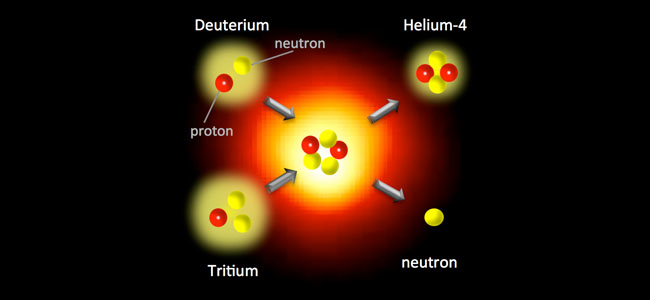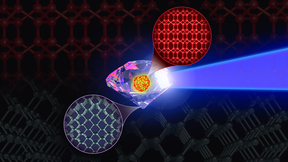Lab researchers gain microscopic understanding of nuclear fusion
 (Download Image)
An artist's conception of the deuterium-tritium fusion.
(Download Image)
An artist's conception of the deuterium-tritium fusion.
Over the past decade, progress has been made in understanding the static properties of light nuclei based on realistic interactions among protons and neutrons. But ab initio calculations of nuclear scattering and reactions have been mostly confined to systems of four nucleons or less.
Starting from a quantum mechanical system of five point-like nucleons and their mutual interactions, Petr Navratil of the Nuclear Theory & Modeling Group (presently at TRIUMF in Canada) and Sofia Quaglioni of the Computational Nuclear Physics Group in the Physics Division, for the first time calculated within an ab initio framework, the cross sections for the deuterium-tritium and deuterium-3He fusion reactions.
The researchers found an enhancement in the measured cross sections of both investigated reactions at very low energy, due to the screening effects of electrons bound to the tritium and, particularly 3He, targets (usually neutral atoms or molecules). This work paves the way for improved evaluation of less known important cross sections for fusion energy generation and nuclear plasma diagnostics.
Navratril and Quaglioni used a new approach for bound and scattering states of light nuclei developed at the Laboratory, thanks in part to a Laboratory Directed Research and Development grant. The state-of-the-art calculations required for this effort were carried out under the LLNL Computing Grand Challenge program.
The research will appear in the Jan.17 issue of Physical Review Letters .
Contact
Anne M Stark[email protected]
925-422-9799
Tags
Lasers and Optical S&TLasers
National Ignition Facility and Photon Science
Science
Featured Articles







